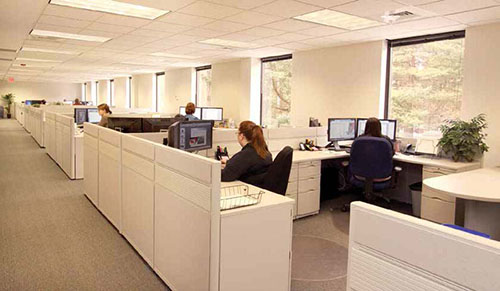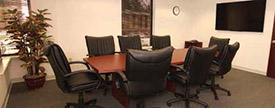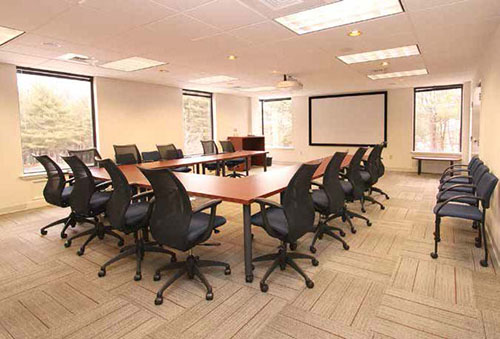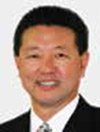
Environmental Management


When most people hear the term ”environmental management,” they believe the subject applies to such topics as environmental science, management of pollution, or management of OSHA/EPA. When we talk about “environmental management” in leadership, we are talking about how to motivate and increase efficiency of employees by creating the right working environment for our employees. Unfortunately, many aviation managers do not consider this subject as part of their responsibility while in their leadership or management role and, therefore, it gets overlooked.
At Global Jet Services (GJS), we moved into a larger office in December 2013 because of our steady growth. Prior to our move, in-depth planning was completed in order to create an effective, efficient and motivational working environment for all our employees.
Let me share our company environment planning decisions while giving you some facts in business practice today and what you can do to improve your environment.
Employees need their space
Many companies provide insufficient space for individual employees. The space is expensive for companies but managers need to know how costly inefficiency is. Companies do not consider that their employees need a comfortable space to work in order to be efficient. A typical cubical with high walls will not do today. It provides employees with a feeling of isolation — a claustrophobic space that is totally separated from their team members. However, a wide-open space with no walls is just as inefficient. It is too open. It has no privacy and is likely too noisy and distracting. Employees want to “own” their spaces. There is nothing wrong with having ownership of space at work; human beings are built this way.
At GJS, we elected to use 42-inch high walls at the individual working stations. This gives employees ownership and privacy of their space, yet the entire office feels open. We set up our training development teams into groups of four. This way, teams of four are working together throughout the day — with close communication in order to promote teamwork, and ultimately creation of a better product that benefits the customer (and our company).

Everyone has windows
Did you know that it is law for many European companies to provide employees with windows? This is definitely not the case in the U.S. Everyone wants and needs windows at their stations; it is no longer just for executives. Employees need to see the sunlight. They need to check outside for weather or to simply take a break from the computer and rest their eyes. At our office, everyone has access to windows — even the inner offices have windows on the walls so employees can look through to the outside windows. Our break room, training room and conference rooms have large windows to provide a relaxing and bright environment as well.
Employees need privacy
Personal cell phone calls can be an issue at any company. Remember the old telephone booths out in the streets? We brought that concept back to our office and we have two telephone booths. They are nothing more than small private offices with telephone and Internet connections. We ask our employees to keep their personal calls to a minimum — however, everyone needs to make private calls once a while. We gave them a perfect place for their personal business. These telephone booths serve another purpose: they also comply with the current HR requirement providing private space for nursing mothers.

Positive working environment
Along with providing employees an adequate working space, we as leaders and managers must create a positive environment by practicing democratic leadership. We need to continue to motivate, communicate and practice teamwork, so employees want to come to work. GJS’ management goal is to ensure each employee is happy with their personal life. It is a simple concept to us: when employees are happy with their personal lives, they are automatically happy with their professional lives, and thereby happy coming to work each day. We practice three top motivators:
1. Thank them for their accomplishments
2. Get them involved in the team decision process
3. Help them with their personal issues if wanted and/or needed
By practicing the top three motivators, employees are happy and the working environment is very positive. We also practice flex-time; that creates a positive environment. All office employees must work at least during the core hours of 9:00 a.m. to 3:00 p.m. (EST) every day. As long as they meet the core hours, they can come in or leave, any time, after working eight hours. They can take a 30-minute or 60-minute lunch break: it is all their choice. (The generation “Y” workforce will especially appreciate this flexible time.)
No more counting the ceiling tiles
I used to work for a large company. Many of them, today, still actually count the ceiling tiles to measure how big your office is going to be, based on your job title. They even mandate the type of furniture you can have (based on your title) as well. At GJS, we all have a job to do and no one is better than the other. All of our managers’ offices are the same size. Even the president’s and vice president’s offices are the same sizes as any manager’s office. If we need private, larger offices, we can use the board room, conference room or even the training room. We practice the same concept that many of the successful Japanese companies do: the president eats at the same cafeteria as the employees. This sends a strong message to the entire company: everyone is important, and we are all one team.
Technicians need more space than pilots
I have visited and seen many flight departments over the years. I could never understand why so many flight departments set up their office spaces the way they do. Often pilot stations are large while the technician’s station is small. I don’t see this as a positive arrangement. Yes, pilots need their stations, too, but they do not need as much. Most of them are flying and they are not at their stations. When they get back, they are at home — where they should be. The technicians are there every day. They need larger stations for their paperwork and manuals.
Organize your surroundings
Organize your work area, including your desk, equipment, records, files, toolbox, machines and anything else you use in doing your work. When everything is in place and you know where each item is, you will never suffer the frustration of looking for it. You will be able to finish a job much more quickly. We are very much affected by our surroundings. If our surroundings are efficient, we work efficiently. Being sloppy will cause sloppy work. Always keep your stations clean and picked up.
Use your common sense and begin with a small effort
Everyone can practice environmental management. Using your common sense and making a small effort will often be a good start. Many managers are simply not aware of how important it is to create a positive environment. You might be financially restricted by your company, but many things you can do will not require money. You might want to issue a justification letter to management to improve your working environment. In all cases, let’s not wait to get started. You will soon see how effective environmental management is to your organization.
 J.D. McHenry is the president of Global Jet Services. He has been involved in numerous aviation maintenance and flight operation programs for more than 31 years. His background includes aircraft manufacturer, corporate flight operations, FAR 91 and 135 operations, aircraft management, repair stations and fixed-base operation. He holds an A&P, IA and doctorate of business management. Global Jet Services’ goal is to lead the way in aviation maintenance training standards. Global Jet Services and FlightSafety International are business partners offering the “Shared Resources” program. For more information, visit www.GlobalJetServices.com.
J.D. McHenry is the president of Global Jet Services. He has been involved in numerous aviation maintenance and flight operation programs for more than 31 years. His background includes aircraft manufacturer, corporate flight operations, FAR 91 and 135 operations, aircraft management, repair stations and fixed-base operation. He holds an A&P, IA and doctorate of business management. Global Jet Services’ goal is to lead the way in aviation maintenance training standards. Global Jet Services and FlightSafety International are business partners offering the “Shared Resources” program. For more information, visit www.GlobalJetServices.com.
